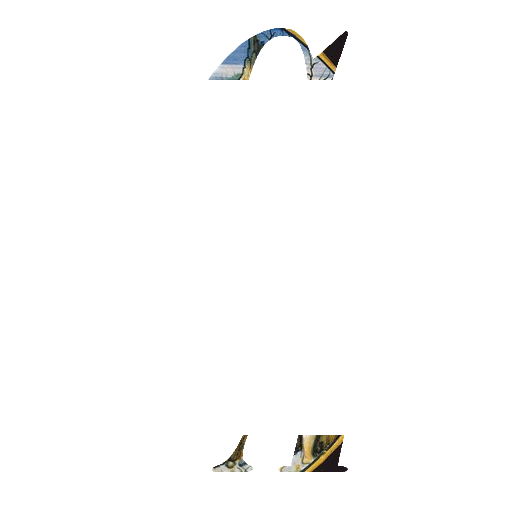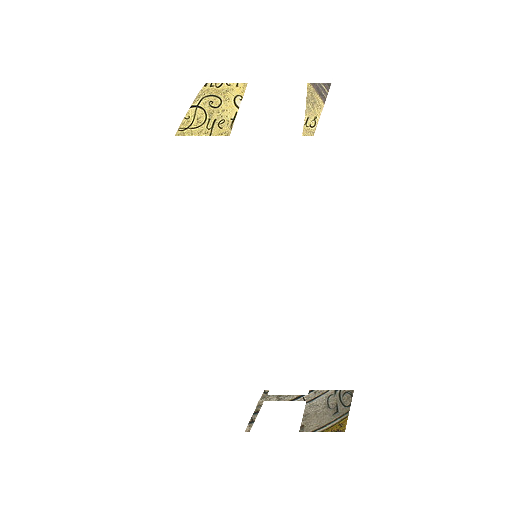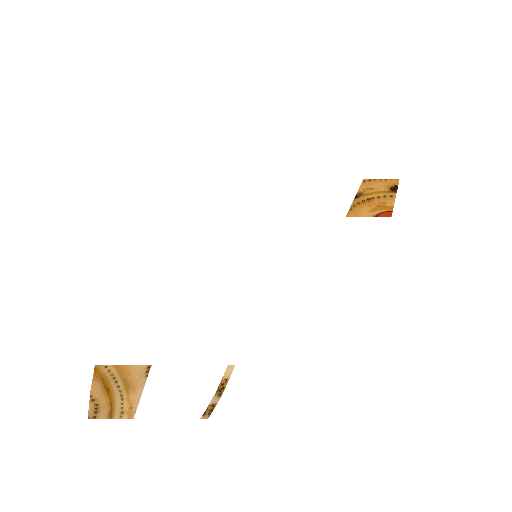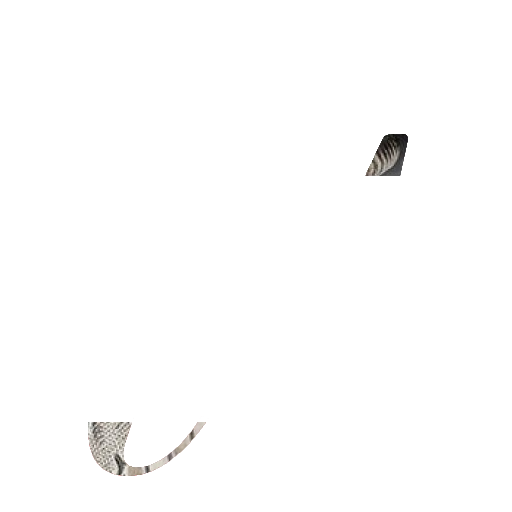Ivory is a hard, white material from the tusks (traditionally elephant's) and teeth of animals, that can be used in art or manufacturing. It consists mainly of dentine (inorganic formula Ca10(PO4)6(CO3)·H2O)), one of the physical structures of teeth and tusks. The chemical structure of the teeth and tusks of mammals is the same, regardless of the species of origin. The trade in certain teeth and tusks other than elephant is well established and widespread; therefore, "ivory" can correctly be used to describe any mammalian teeth or tusks of commercial interest which are large enough to be carved or scrimshawed. It has been valued since ancient times for making a range of items, from ivory carvings to false teeth, fans, and dominoes. Elephant ivory is the most important source, but ivory from mammoth, walrus, hippopotamus, sperm whale, killer whale, narwhal and wart hog are used as well. Elk also have two ivory teeth, which are believed to be the remnants of tusks from their ancestors.
Both the Greek and Roman civilizations practiced ivory carving to make large quantities of high value works of art, precious religious objects, and decorative boxes for costly objects. Ivory was often used to form the white of the eyes of statues.
There is some evidence of either whale or walrus ivory used by the ancient Irish. Solinus, a Roman writer in the 3rd century claimed that the Celtic peoples in Ireland would decorate their sword-hilts with the 'teeth of beasts that swim in the sea'. Adomnan of Iona wrote a story about St Columba giving a sword decorated with carved ivory as a gift that a penitent would bring to his master so he could redeem himself from slavery.
The Syrian and North African elephant populations were reduced to extinction, probably due to the demand for ivory in the Classical world.
The Chinese have long valued ivory for both art and utilitarian objects. Early reference to the Chinese export of ivory is recorded after the Chinese explorer Zhang Qian ventured to the west to form alliances to enable the eventual free movement of Chinese goods to the west; as early as the first century BC, ivory was moved along the Northern Silk Road for consumption by western nations. Southeast Asian kingdoms included tusks of the Indian elephant in their annual tribute caravans to China. Chinese craftsmen carved ivory to make everything from images of deities to the pipe stems and end pieces of opium pipes.
The Buddhist cultures of Southeast Asia, including Myanmar, Thailand, Laos and Cambodia, traditionally harvested ivory from their domesticated elephants. Ivory was prized for containers due to its ability to keep an airtight seal. It was also commonly carved into elaborate seals utilized by officials to "sign" documents and decrees by stamping them with their unique official seal.
In Southeast Asian countries, where Muslim Malay peoples live, such as Malaysia, Indonesia and the Philippines, ivory was the material of choice for making the handles of kris daggers. In the Philippines, ivory was also used to craft the faces and hands of Catholic icons and images of saints prevalent in the Santero culture.
Tooth and tusk ivory can be carved into a vast variety of shapes and objects. Examples of modern carved ivory objects are okimono, netsukes, jewelry, flatware handles, furniture inlays, and piano keys. Additionally, warthog tusks, and teeth from sperm whales, orcas and hippos can also be scrimshawed or superficially carved, thus retaining their morphologically recognizable shapes.
Ivory usage in the last thirty years has moved towards mass production of souvenirs and jewelry. In Japan, the increase in wealth sparked consumption of solid ivory hanko – name seals – which before this time had been made of wood. These hanko can be carved out in a matter of seconds using machinery and were partly responsible for massive African elephant decline in the 1980s, when the African elephant population went from 1.3 million to around 600,000 in ten years.
Ivory articles are usualy found in Fine Furnishings and Decorated Arts auctions at Centurion Auctioneers which are held regularly.
Click on the images for more information.
Should you have any questions in regards to Ivory articles that you might wish to evaluate or to list in future auctions, please visit the CONTACT page , the VALUATIONS page or the REQUEST INFORMATION page or send an email to Centurion Auctioneers - info@centurion-auctions.com
Both the Greek and Roman civilizations practiced ivory carving to make large quantities of high value works of art, precious religious objects, and decorative boxes for costly objects. Ivory was often used to form the white of the eyes of statues.
There is some evidence of either whale or walrus ivory used by the ancient Irish. Solinus, a Roman writer in the 3rd century claimed that the Celtic peoples in Ireland would decorate their sword-hilts with the 'teeth of beasts that swim in the sea'. Adomnan of Iona wrote a story about St Columba giving a sword decorated with carved ivory as a gift that a penitent would bring to his master so he could redeem himself from slavery.
The Syrian and North African elephant populations were reduced to extinction, probably due to the demand for ivory in the Classical world.
The Chinese have long valued ivory for both art and utilitarian objects. Early reference to the Chinese export of ivory is recorded after the Chinese explorer Zhang Qian ventured to the west to form alliances to enable the eventual free movement of Chinese goods to the west; as early as the first century BC, ivory was moved along the Northern Silk Road for consumption by western nations. Southeast Asian kingdoms included tusks of the Indian elephant in their annual tribute caravans to China. Chinese craftsmen carved ivory to make everything from images of deities to the pipe stems and end pieces of opium pipes.
The Buddhist cultures of Southeast Asia, including Myanmar, Thailand, Laos and Cambodia, traditionally harvested ivory from their domesticated elephants. Ivory was prized for containers due to its ability to keep an airtight seal. It was also commonly carved into elaborate seals utilized by officials to "sign" documents and decrees by stamping them with their unique official seal.
In Southeast Asian countries, where Muslim Malay peoples live, such as Malaysia, Indonesia and the Philippines, ivory was the material of choice for making the handles of kris daggers. In the Philippines, ivory was also used to craft the faces and hands of Catholic icons and images of saints prevalent in the Santero culture.
Tooth and tusk ivory can be carved into a vast variety of shapes and objects. Examples of modern carved ivory objects are okimono, netsukes, jewelry, flatware handles, furniture inlays, and piano keys. Additionally, warthog tusks, and teeth from sperm whales, orcas and hippos can also be scrimshawed or superficially carved, thus retaining their morphologically recognizable shapes.
Ivory usage in the last thirty years has moved towards mass production of souvenirs and jewelry. In Japan, the increase in wealth sparked consumption of solid ivory hanko – name seals – which before this time had been made of wood. These hanko can be carved out in a matter of seconds using machinery and were partly responsible for massive African elephant decline in the 1980s, when the African elephant population went from 1.3 million to around 600,000 in ten years.
Ivory articles are usualy found in Fine Furnishings and Decorated Arts auctions at Centurion Auctioneers which are held regularly.
Click on the images for more information.
Should you have any questions in regards to Ivory articles that you might wish to evaluate or to list in future auctions, please visit the CONTACT page , the VALUATIONS page or the REQUEST INFORMATION page or send an email to Centurion Auctioneers - info@centurion-auctions.com

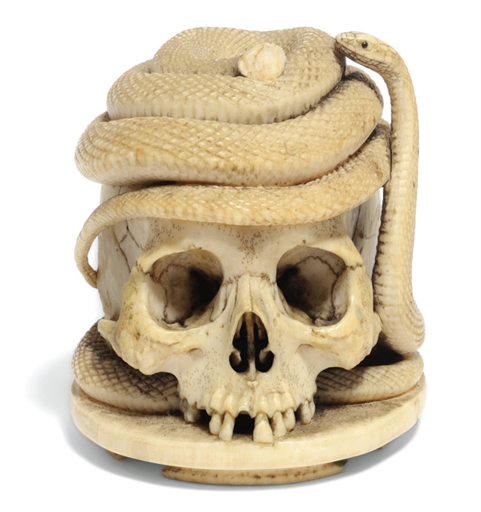
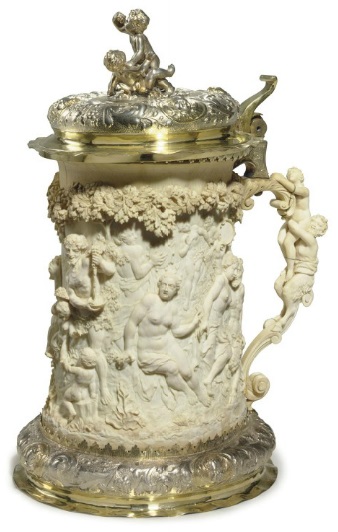
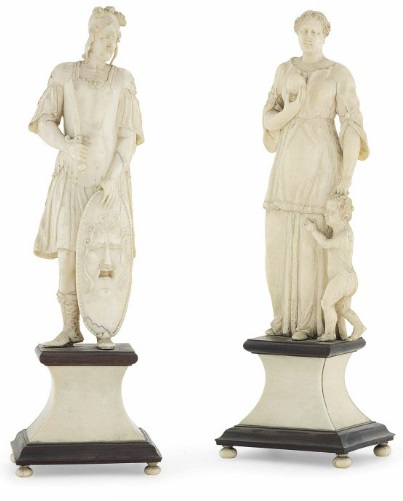
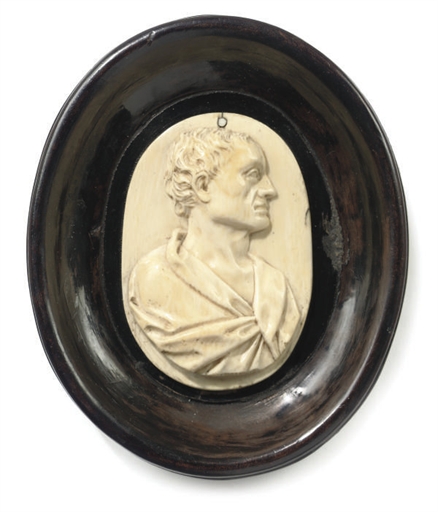

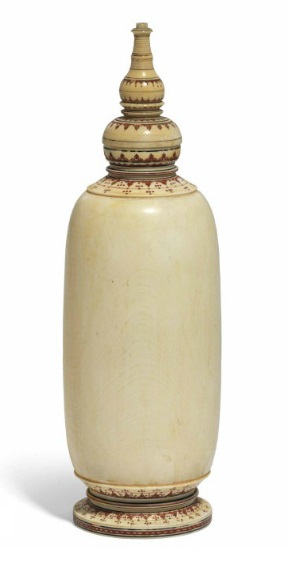
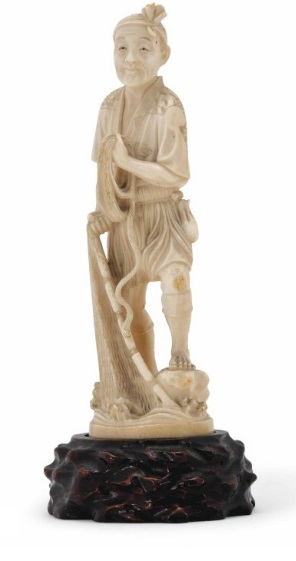

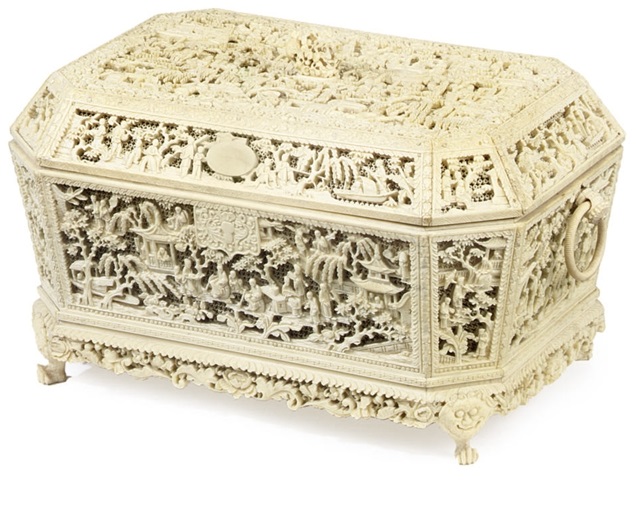

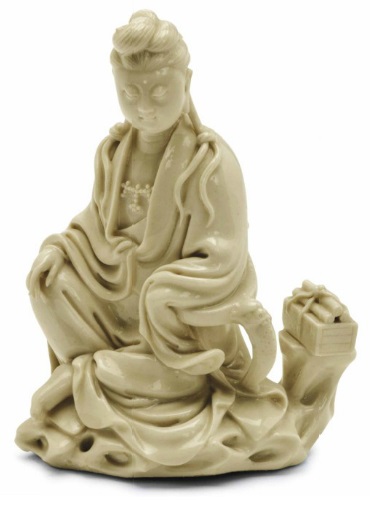
LATE 19TH AND EARLY 20TH CENTURY
6 ½ in. (16.5 cm.) high.
Sold £1,375 Christie's auctions
19TH CENTURY
3¼ in. (8 cm.) high.
Sold £2,125 Christie's auctions
LAST QUARTER 19TH CENTURY
14¾ in. (37.5 cm.) high.
Sold $37,500 Christie's auctions
DIEPPE, 18TH CENTURY
6¾ in. (17 cm.) high; 9 in. (23 cm.) overall.
Sold £4,000 Christie's auctions
18TH CENTURY
4¼ in. (10.5 cm.) high.
Sold £500 Christie's auctions
SOUTH-GERMAN, CIRCA 1700
35 cm. high overall.
Sold €3,750 Christie's auctions
SOUTH INDIA, 19TH CENTURY
10 3/8in. (26.4cm.) high.
Sold £4,000 Christie's auctions
MEIJI PERIOD (1868-1912)
8 3/8 in. (21.2 cm.) high, wood stand.
Sold £625 Christie's auctions
CIRCA 1900
The ball 5 ½ in. (14 cm.) diam., ball and stand 28 ½ in. (72.4 cm.) high, wood stand.
Sold £11,250 Christie's auctions
CIRCA 1840
13 in. (33 cm.) wide.
Sold £11,875 Christie's auctions
18TH CENTURY
12 ½ in. (32 cm.) high.
Sold £1,375 Christie's auctions
19TH/20TH CENTURY
5 ¾in. (14.6cm.) high.
Sold $1,500 Christie's auctions













